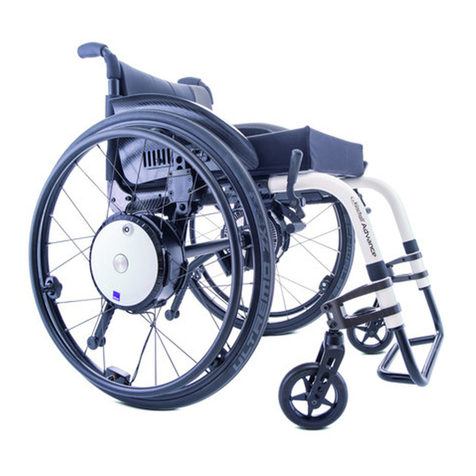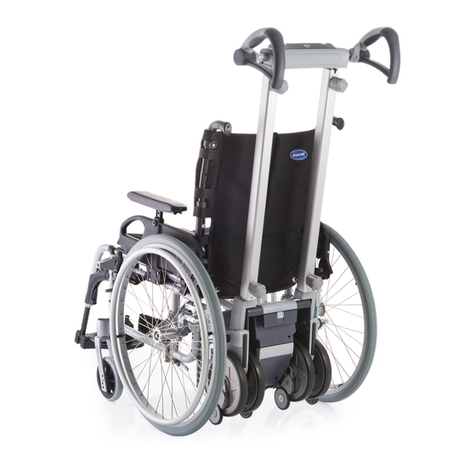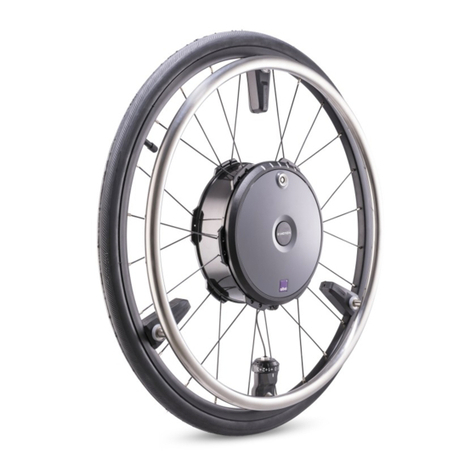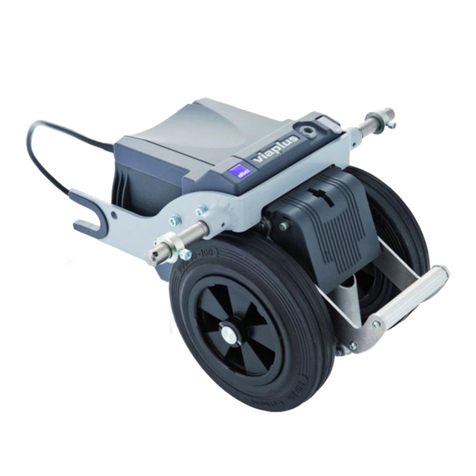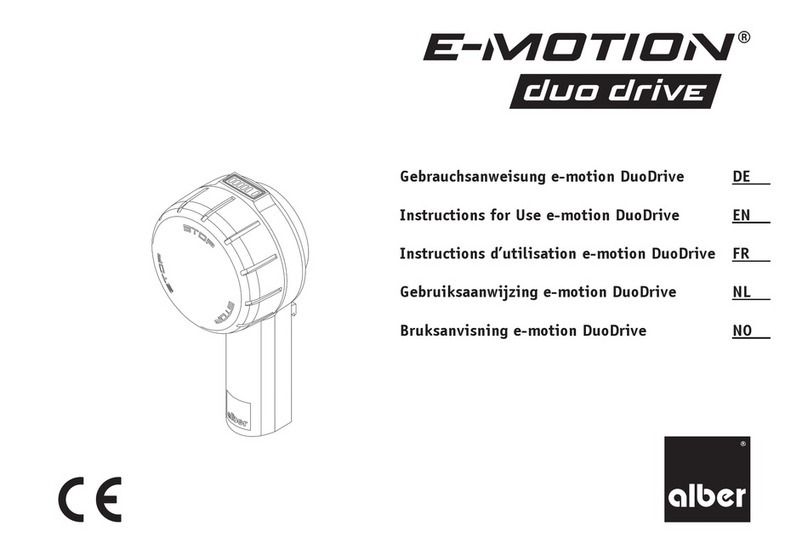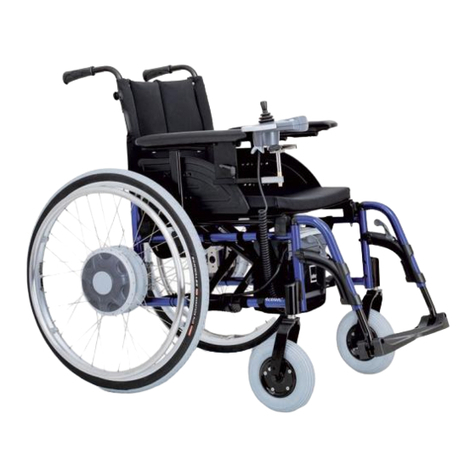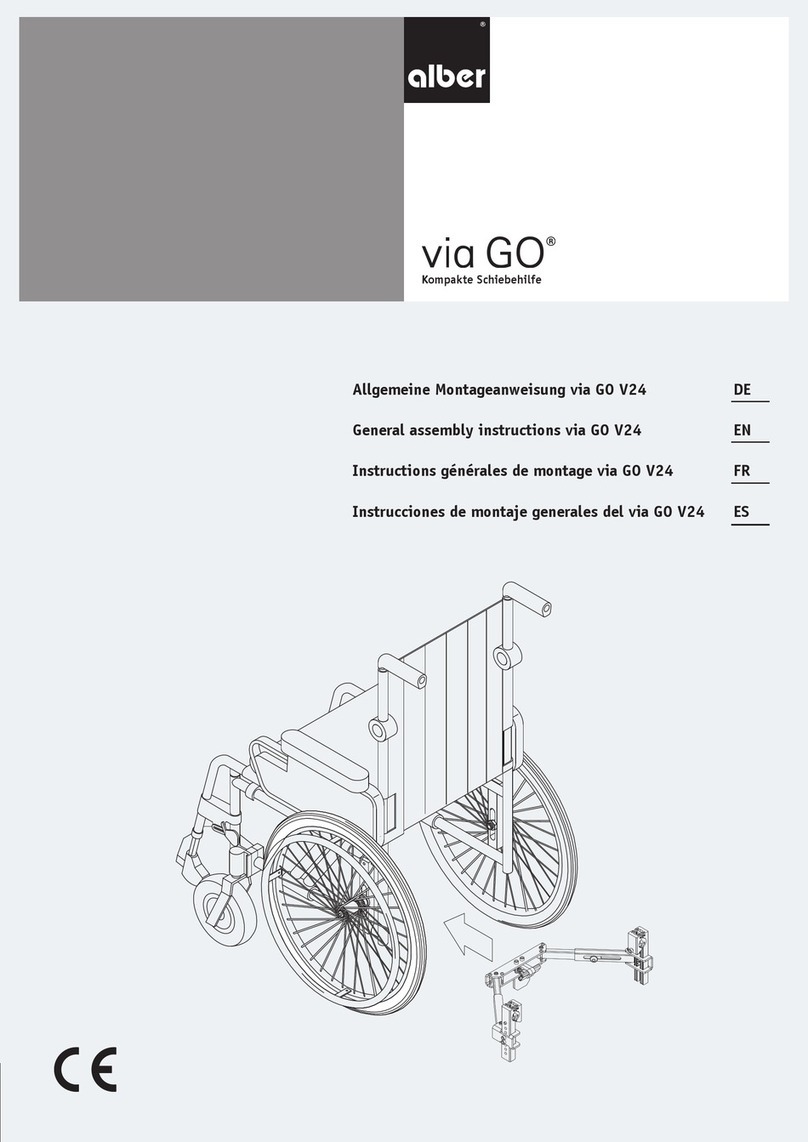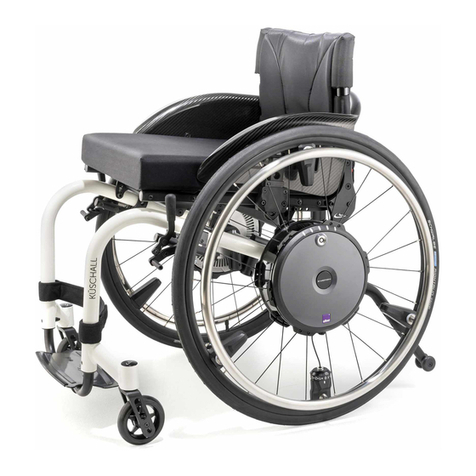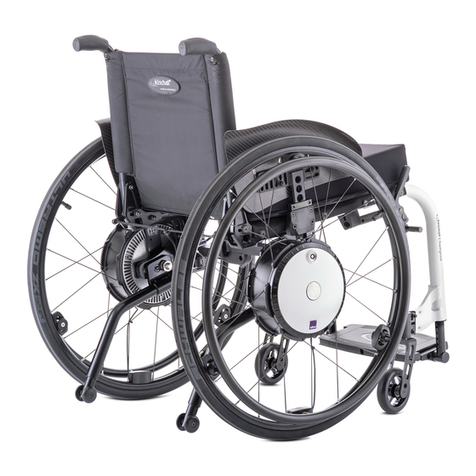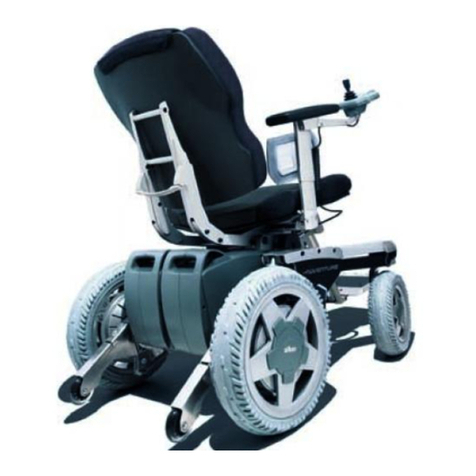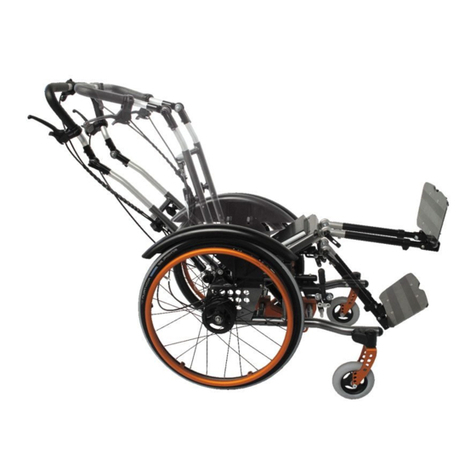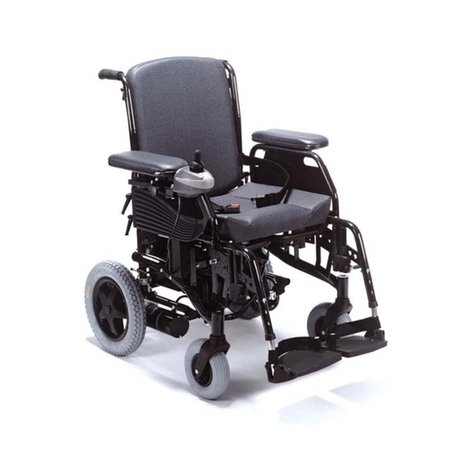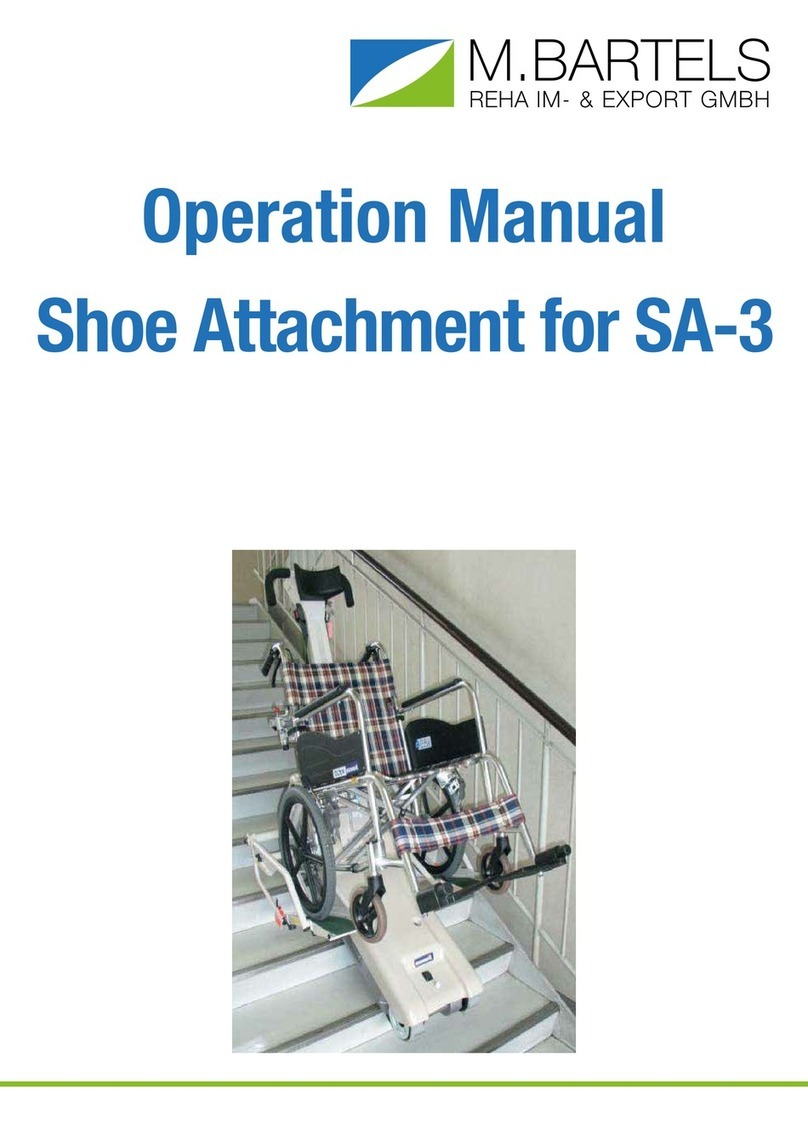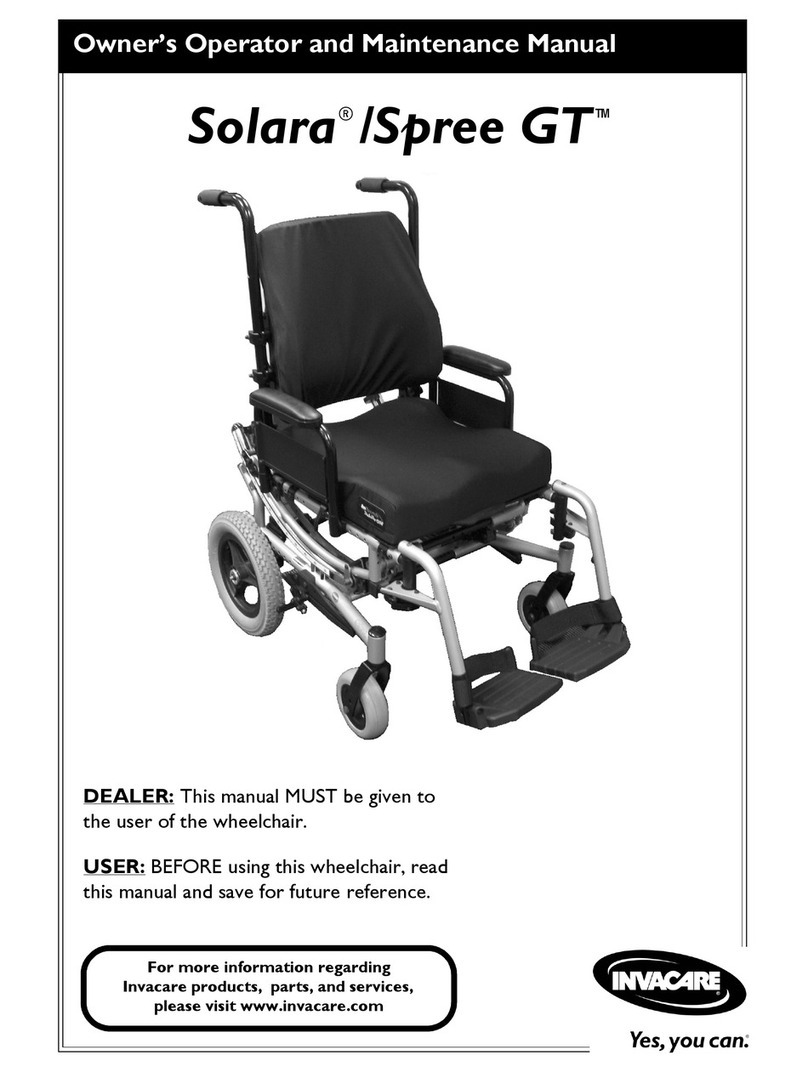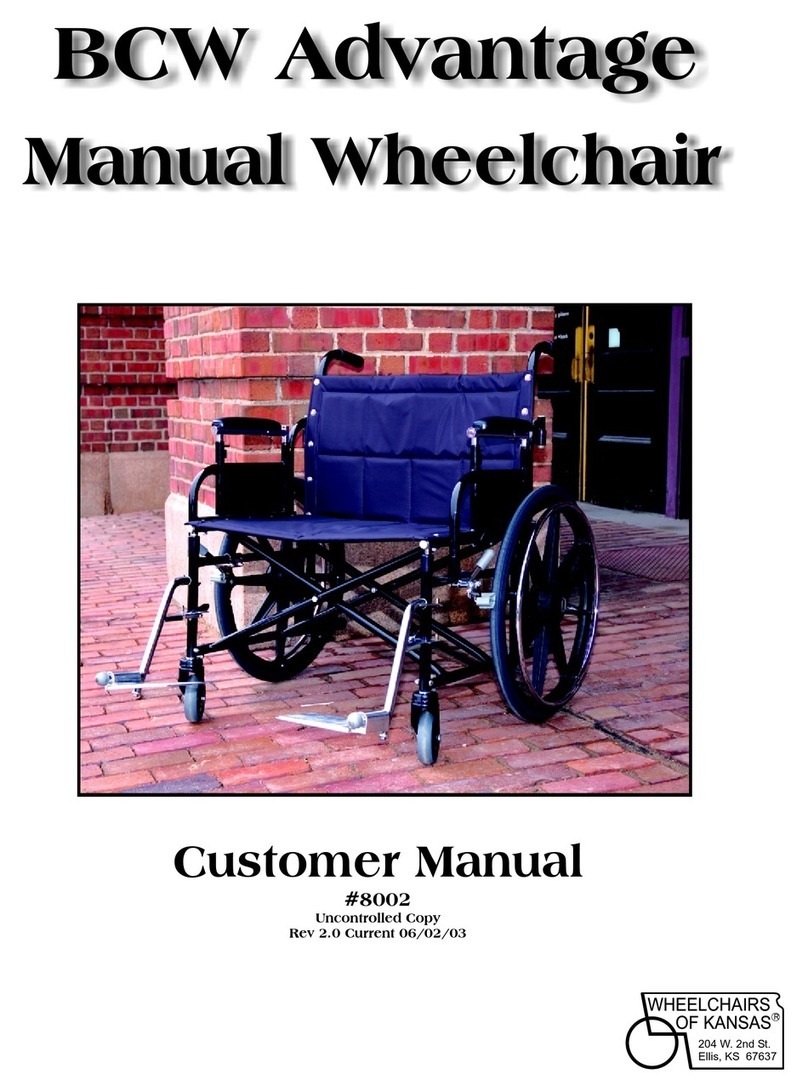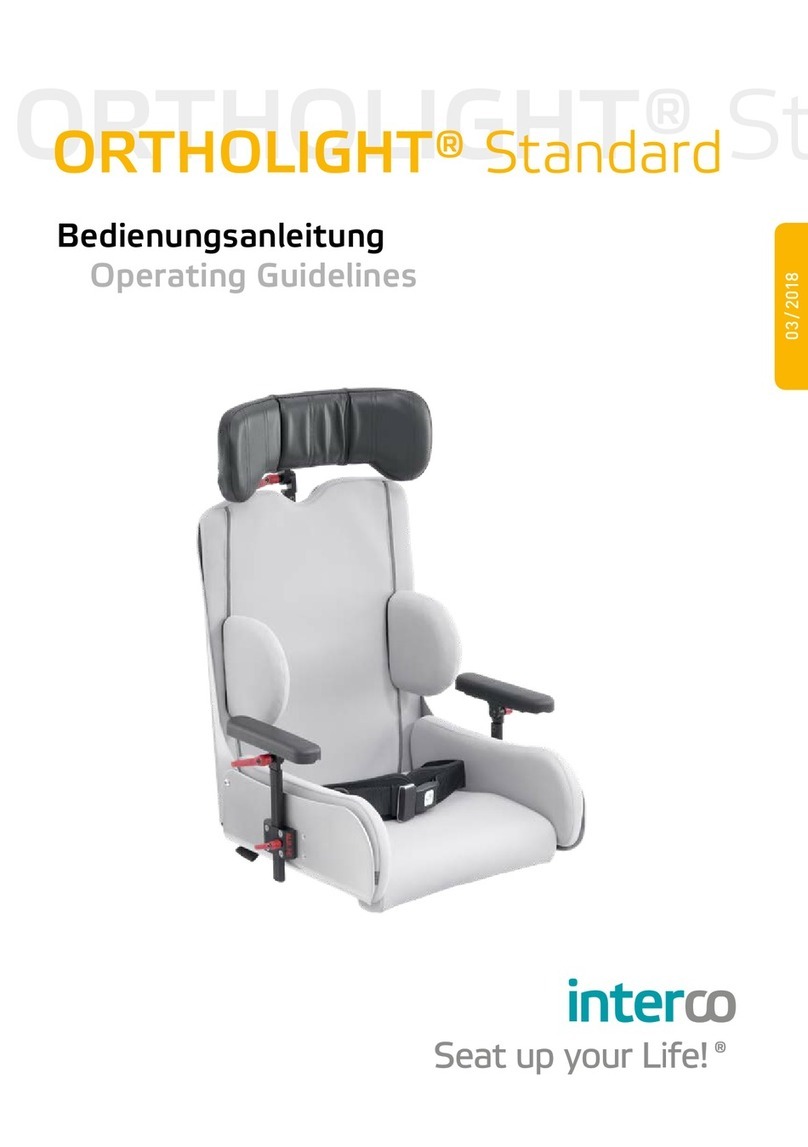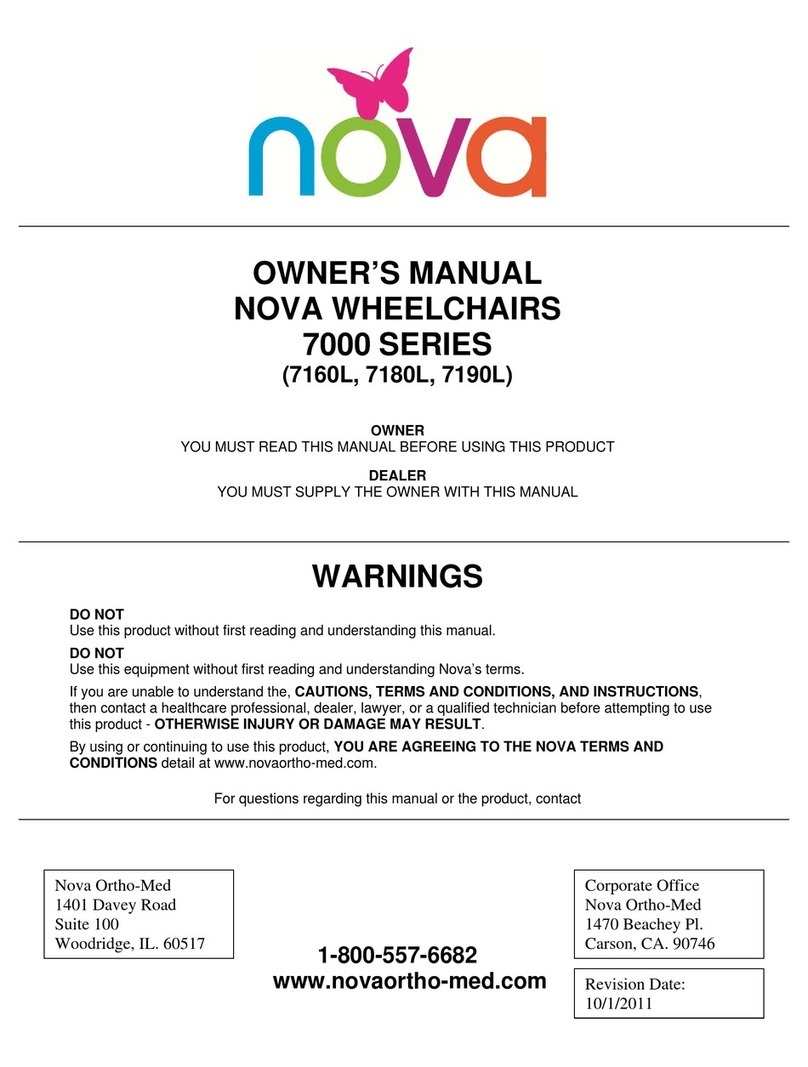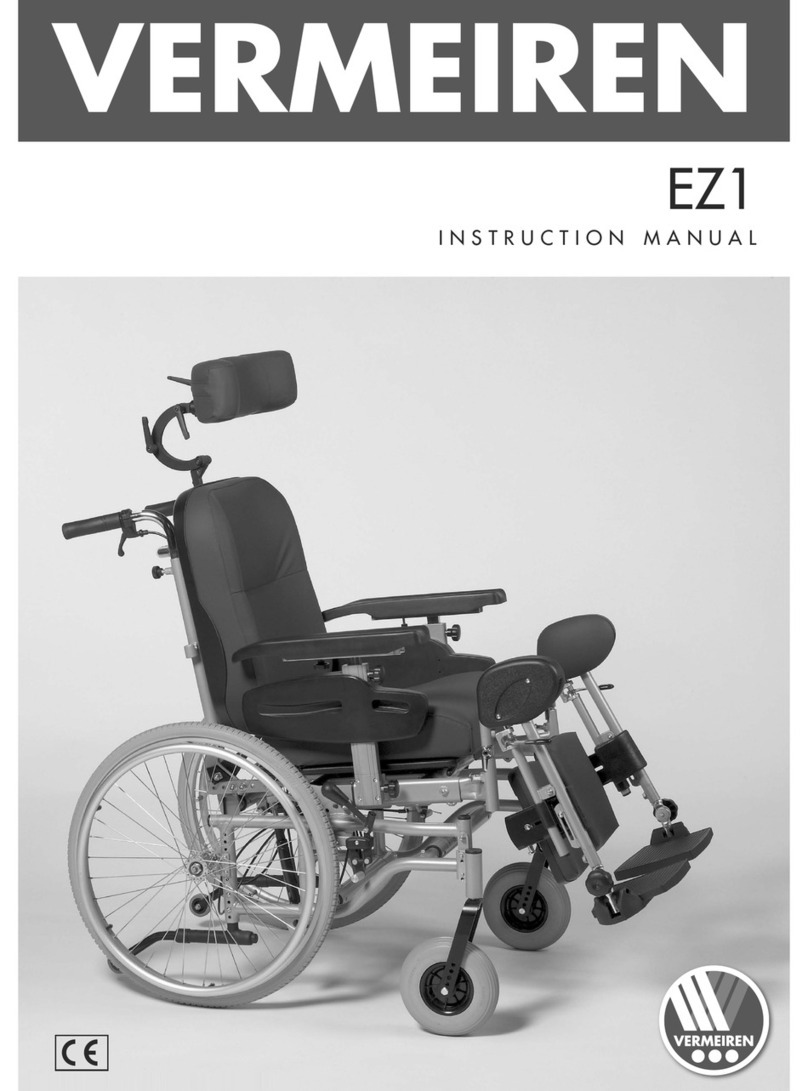1. Introduction
1.1 Important safety instructions – please observe carefully at all times
The scalacombi is a mobile stair climber with built-in seat.
For safety reasons, it must only be operated by persons who
have been instructed in its handling
who can climb stairs backwards
can lift at lest 20 % of their own bodyweight
have the physical and mental capacity to operate the device safely in all possible situations.
When purchasing a new device, the initial instruction in its use is part of the scope of delivery and is provided by your spe-
cialist dealer on appointment. The instruction is free of charge.
If you feel a little unsure how to handle your scalacombi, please contact your specialist dealer for advice.
In the event of a technical fault or failure, contact your specialist dealer or an agent of Ulrich Alber GmbH.
The performance of the scalacombi can be affected by electromagnetic fields, produced for example by mobile phones. There-
fore, switch off the scalacombi if a mobile phone is used in the vicinity of the wheelchair. Persons using the scalacombi and
accompanying persons must not use a mobile phone during stair climbing.
We generally recommend refraining from using the scalacombi in locations that are exposed to strong electric fields.
When in operation, the scalacombi might under certain circumstances interfere with other electrical equipment such as anti-
shoplifting barriers in department stores.
Therefore, do not start the scalacombi before you have been properly instructed in its operation by an
authorised specialist dealer!
1.2 Proper use of the scalacombi
The scalacombi has been designed exclusively for conveyance of persons with a walking disability over steps; note in this
regard that you should not convey a person with a walking disability on escalators or moving walkways. It is forbidden to
make any technical modifications to the device. Do not attach any parts other than accessories approved by Ulrich Alber
GmbH for operation. The scalacombi must only be operated under the following conditions:
Compliance with the information, instructions, and recommendations contained in this operating manual
The device is operated by a person who has been instructed in its use
No technical modifications have been made to the device by the user or by any third party
The person to be transported is able sit on the scalacombi without the need for assistance
The operator must check whether it is necessary to use a lap belt and/or the foot belt
During transportation, the arms of the person being conveyed may not project over the armrests of the scalacombi seat.
An instructed person is a person who has been instructed in the operation of the scalacombi and in his/her tasks and who
has been made aware of the possible hazards associated with improper use of the device. The instruction session is provided
by the authorized specialist dealer or by an agent of Ulrich Alber GmbH. The operation of the scalacombi by non-instructed or
unqualified persons is expressly prohibited.
The scalacombi must not be used for transportation tasks that contravene the intended use of the stair climber. This applies
in particular to all types of load transports such as the transport of household objects across steps or stairs.
The use of the scalacombi for any of the following purposes is deemed improper by Ulrich Alber GmbH:
Use of the device that contravenes the instructions and recommendations in this operating manual
Exceedance of the technical limits laid down in this operating manual
Technical modification to the stair climber
Use and/or attachment of parts and accessories that have not been supplied or approved by Ulrich Alber GmbH
Ulrich Alber GmbH shall not be liable for damage caused by improper use of the stair climber.
•
•
•
•
•
•
•
•
•
•
•
•
•
•
